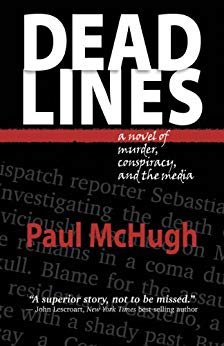The sun rises on a beach in Florida

It’s been said—and not just by me—that every fictional character must own a grand and lovely stash of personal secrets.
Your readers don’t need to know what these secrets are. But you, as the author, absolutely should know them.
A seething magma of motivation heaves deep within each human being. Its heat forges layer and dimension in personality. Its fumes drift outward as perceptible tones of thought, speech, and action.
An author seeking to create a fictional character with any degree of realism should strive to begin by building a similar depth of motivation for the theoretical entity under construction.
Please note that this procedure is quite different than generating big motives to feed plot development.
An author can easily be obvious about large motivations, all those psychological wrenches designed to ratchet a reader through the plot twists.
AND THE WHEELS GO ‘ROUND ‘N’ ‘ROUND
In a mystery or a thriller, providing clarity of the large motives in a plot often enhances your story. That kind of presentation is akin to moral clarity; it helps defines a game board. If the reader knows who to root for and why, a story becomes exciting and reassuring at the same moment.

(Jack Reacher? Step up, big guy. Here’s your chance to take a bow.)
Or teasingly, you may conceal your hero’s or villain’s motive for a brief time just to pluck it forth at the proper moment like a magician yanking a rat from a hat. Voila!
When and why and how you pull off such a storytelling trick is an artistic decision. (Of course, if you attempt to commit literature in the first degree, you’ll need to show off a few much fancier moves.)
But it’s not what I wish to discuss, here. Because aside from demands of the plot, there’s everything else in your story.
Let’s leave all plot machinations of whatever sort alone for a bit.
PIXELS IN A PROFILE
I’m talking about shaping a visualization that plunges a level or two deeper, to make your presentation of a personality more resonant, more human, and more believable. Delve into the reasons why a character dresses, eats, speaks, and relates in his or her own unique way.
Naturally, there’s a pitfall. If you as author seek to explain all that in any sort of granular detail, you’ll run a risk of having your story bog down. So, it’s best to not explain it, nor make those telling details particularly outstanding or explicit.

(Why does Bond prefer his martinis shaken, not stirred? Who can say?
We see this tough-guy spy fetishize his drinks and seem rather fussy about them. It’s a ray of insight. Now, let the reader extrapolate. How does the man fold his socks?)
It’s best to have such generalized motivations show up covertly in those small and simple choices each character must make over the course of daily life. The author can describe or refer to these things while en route to matters of far greater heft.
Handle a buried background with a proper respect, and your character springs much more fully into being. Then things he or she does shall seem to resonate out of a mysterious psychological reality. Small details can leave breadcrumbs in the text, pointing a reader’s way to that deep, dark cave.
This seems true of all characters, whether fictional or not.
I shall illustrate.
TIME FUTURE

Recently, I bought a sailboat. Wee bit of a thing, more dinghy than boat, if you want to know the truth. First one I’ve had available to mess with since I was a tadpole, really. The Montgomery 10 designation means it’s just ten feet long. Yet it shows good lines on a lapstrake fiberglass hull and boasts a Gunter-rigged mast that thrusts a surprisingly large sail into the sky.
Since I plan to take this cockleshell out into the Pacific Ocean, I’m cautiously exploring its seaworthiness. For my first voyage, I’ll rig it only with a tandem sea kayak sail, one about a third the spread of the Monty’s stock canvas. I’ve already strengthened other components by remodeling the boat’s transom, sanding and finishing all her teak woodwork, rebuilding rudder and tiller, replacing the crappy oars.
AND TIME PRESENT

See, as my lil’ Monty goes to sea, I don’t want to deal with any shocks or surprises.
I wish to be able to focus calmly on my principal goal, which is to grab a deep breath of the salty starch of ocean air. I plan to challenge the billows in a blissful way, on a voyage that feels tranquil and free.
ARE BOTH PERHAPS CONTAINED
So, why’s that important? Well! Shall we now sink our spades, and delve into some buried background?
The tale that I’ll spin for you floats in from an ocean three thousand miles away and from an era more than fifty years in the past.
IN TIME PAST

Back then I was a slim youth in my mid-teens, only starting to feel my oats. I hunted for chances to demonstrate a budding sense of independence. An opportunity arose when my father said he planned to go down to Key Largo, where our family’s cabin cruiser was moored, to do some work on its engine. I asked if we could trailer our 16-foot sloop down there on that same day—so I could sail it back up myself to our hometown on the mainland.
He remonstrated that such a solo voyage would be selfish if performed alone. Therefore, I should take my brother along. But anticipating this type of requirement, I’d already coached little brother to inform our dad that he had zero desire to participate. My father grumbled, yet in the end he assented sufficiently to enable my scheme.

Thus, it came to pass that I hoisted the mainsail on the open-cockpit Glander sloop and slid out onto the sparkling jade waters of Barnes Sound. Near Division Point, I ruddered into the wind and while the sail luffed, I raised the jib. With sheets snubbed, I fell off onto a beam reach. And then, my bare feet braced on the port gunwale and my butt hanging out to starboard, tiller and mainsheet trembling in my grasp, I felt the sloop come alive.
O’ER THE BOUNDING MAIN
I had no chart nor compass nor optics aboard, but I sailed Florida’s Intracoastal Waterway on lanes I knew well, and so dead reckoning was my entirely reasonable navigation policy.

Heeled over, with water hissing by the hull and the boat’s wake a-bubbling, I scooted past the outlaw waterfront bar of Alabama Jack’s and into Card Sound, then sailed on by Caesar’s Creek and the legendary lair of the pirate Black Caesar. A motorboat churned by me. A teenage girl in a swimsuit sat on its stern and she offered me a cheerful wave. It didn’t get much better than this! I was free, I was having fun, I was directing my own course, I was fully in charge of my fate.
Oh, I ran into a hitch or two—shifty winds, dropping tide, a high sandbar off the Arsenicker Keys—yet nothing I could not deal with. Eventually I tacked into the channel of my target port, tied up, and dropped a dime into a payphone to tell my family I’d arrived. My father drove the trailer out to collect me and the boat.
Then my adventure became more intriguing. And not in a good way.
A SKIPPER GETS KEELHAULED
To say that my father was sparing of praise vastly understates the case. In dealing with his children, my dad’s main mode of communication was rage, though he could alternate it with a stony indifference.
I must admit, I did (briefly) entertain a fantasy that having my dad observe his very own teenage lad single-hand a sloop over thirty miles of open water might impress him. It did not. On our drive home, he just bitched about how I’d wasted a whole hour of his time by forcing him to come pick me up.
Wow, dude! The guy was seriously trying to harsh my mellow.
Yet I made no reply. At least, not an audible one. I didn’t voice my thought, for example, that a different father might feel somewhat proud of his son.

However, deep within, I whacked away at cords that still bound me to him. At that moment, his opinion began to cease to matter to me. This man didn’t care whether I grew up strong and independent or not. If I desired such qualities, I needed to navigate right around him. Dad had finally reduced himself to a piling I intended to pass on my voyage out into the open ocean.
And here, a parable ends.
HEY, WHO IS THAT GUY?

Now, imagine that you’re visiting a harbor somewhere on the West Coast. You watch an older gent with a white beard who’s bustling about way down on a ramp, as he proceeds to launch a small sailboat.
How does this guy move? What’s his body language tell you? Is he pausing now, and staring for a while out to sea? As he does so, what do you suppose he thinks about? If you were to approach and inquire, what words would he say? How does his face look as he talks (if he talks) and what emotion does he express?
If you’re an author, and you wish to devise a seagoing character such as this, perhaps you’ve already awarded him a primary mission. I mean, in plot terms. Maybe you plan to have him sail out to a larger vessel, to exchange legal or illegal goods, weapons or drugs, get sensitive docs or provide tipoffs, offer a cash payment or receive one.
Yet maybe, he only wants to fish. Or perhaps, he’s heading out to scatter his father’s ashes.

As your character performs whatever chore it is, though, he should do it in a way that embodies and to a degree reveals some of his deep and older secrets. Show the reader who this person is. I mean, apart from his utility in the plot.
The kind of things you attempt to discern about yourself are the sorts of issues you should seek to figure out about your characters. Since it’s the very stuff of life. To make your characters livelier, generously award them a heaping cargo of this stuff to tote, even if they stash it every cubic inch of it below decks.
And you need not scribble out any sort of heavily annotated bill-of-lading. In fact, it’s a better deal all-around if you don’t bother!
Just weigh anchor and forge ahead on your key mission—offer the readers a compelling story of a voyage.









